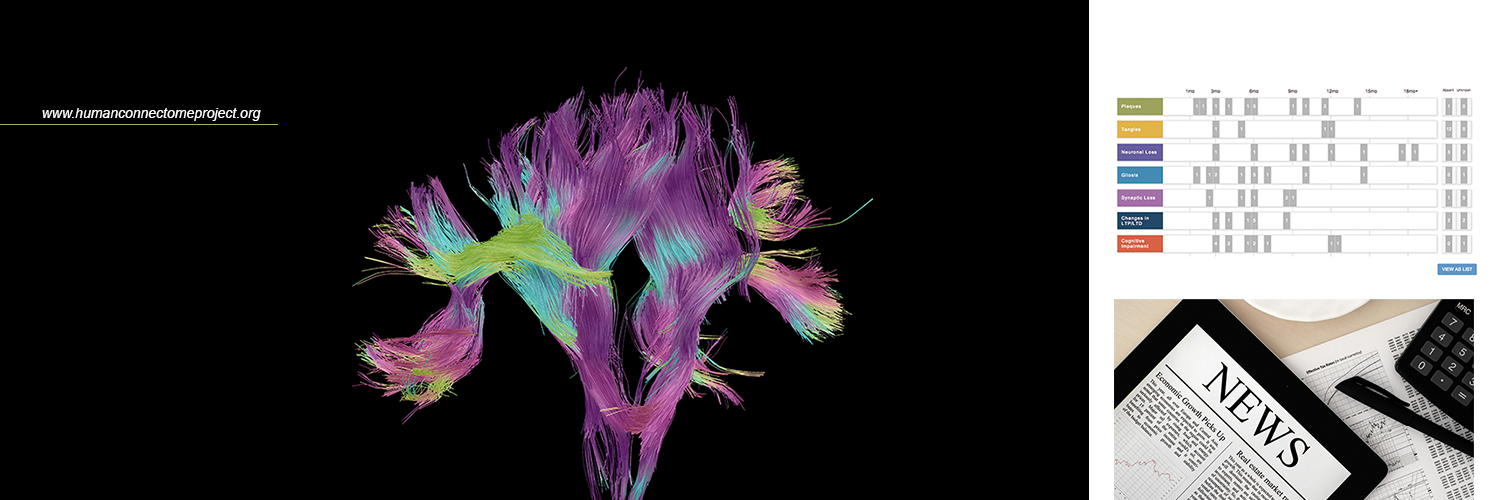
Alzforum
@alzforum
A news and information resource website helping scientists advance AD research since 1996. Alzforum doesn’t endorse any specific product or scientific approach.
Using AI, scientists uncover 250 substrates for γ-secretase, including 160 brand-new ones. @LMU_Muenchen @TU_Muenchen ow.ly/NRTO50Wv0rv
The FDA greenlit a more gradual titration scheme for donanemab that cuts the risk of ARIA-E by a third or more. #alzheimersdisease ow.ly/vSTx50WuYWT
The first four papers mining the GNPC proteomics dataset surfaced plasma signatures of cognitive decline and neurodegeneration, and a pro-inflammatory profile in APOE4 carriers. #alzheimers #parkinsons #FTD @wustl @Stanford @UniofOxford @Sydney_Uni ow.ly/Qnwt50WuxQR
A fast-aging brain increases AD risk similar to having a copy of APOE4, but a youthful brain protects like two copies of APOE2. ow.ly/UsFK50WsW08
The glut of lipid blobs spotted in activated microglia isn’t just for looks. The depots are essential for all manner of microglial responses. @NIH ow.ly/vZf250Ws3NK
Plasma p-tau217 peaks at birth, according to new research. Levels in newborns surpass even those of people with Alzheimer’s. @goteborgsuni ow.ly/H5x750Wr81U
Largest-ever tau-PET studies confirm ties between tangles and cognitive decline. ApoE4 carriers and women get tangles earliest. @_michael_scholl @AlexisMoscoso9 @amsterdamumc ow.ly/k8O750WqRix
Proteomic studies of CSF and brain tissue find distinct features of #alzheimersdisease in Down’s syndrome compared with EOAD and LOAD. @EmoryMedicine @nyugrossman @IIBSantPau ow.ly/5hWT50WpsSC
In the oldest old, a hefty load of amyloid plaques spells poorer cognition, but other types of neuropathology play a part, too. @amsterdamumc ow.ly/5XWH50WoLoH
ApoE has a new partner. Once endocytosed, it hands off its lipid cargo to TTYH2, a lipid binding protein found in endosomes. ow.ly/re9F50Woy7X
In a large study of three cohorts, scientists found that CSF α-synuclein assays not only diagnose Parkinson’s disease with high sensitivity, but also predict who will develop dementia—and how quickly. @UCLIoN ow.ly/syAV50WoxqQ
Are T cells in the brain friend or foe? In tauopathy mice, CD8⁺ T cells can slow pathology. In older, wild-type mice, they damage the optic nerve. (@NINDSnews @NIH @tumuenchen ow.ly/5yc650Wos1Y
Subcellular proteomics reveals how #alzheimersdisease affects the myelin-axon interface. Spoiler alert: AD promotes aberrant signaling that likely dampens synaptic transmission. @Yale ow.ly/myTJ50WlcSR
To fuel the relentless demands of synaptic transmission, neurons tap little fat stores within their synapses. @WeillCornell ow.ly/TZ0w50Wl2HN
Angiotensin converting enzyme kicks microglia into hyperdrive, boosting their ability to clear plaques in a mouse model of Alzheimer’s disease. @Cedars-Sinai ow.ly/2w0i50WkJ3L
Scientists found a novel amyloid fibril, Aβ42 Type III, in brains extracts from a man who had AD. It contains three, not two, protofilaments. @sjtu1896 ow.ly/6pms50WjC1m
With 40,000 blood and CSF samples, the GNPC’s neurodegeneration proteomics dataset is the largest disease-specific effort yet. #alzheimersdisease @_neuroproteome ow.ly/s0Ks50WhQbs
The ultra-sensitive NULISA protein assay can detect #alzheimersdisease by analyzing blood. It may aid differential diagnosis and prognosis. @BarcelonaBeta @wustl @Cambridge_Uni @UWMadison @goteborgsuni @PittTweet ow.ly/6LOJ50WhPx6
An H. pylori protein, CagA, blocks amyloidogenic fibrilization across a broad range of pathogenic proteins, highlighting potential therapeutic applications. @karolinskainst ow.ly/Noqr50WhMNw
A longitudinal biomarker study in Down’s syndrome adults identifies plasma p-tau217 as a key measure of dementia risk. @lunduniversity @NIHAging ow.ly/OQeL50Wh9NF